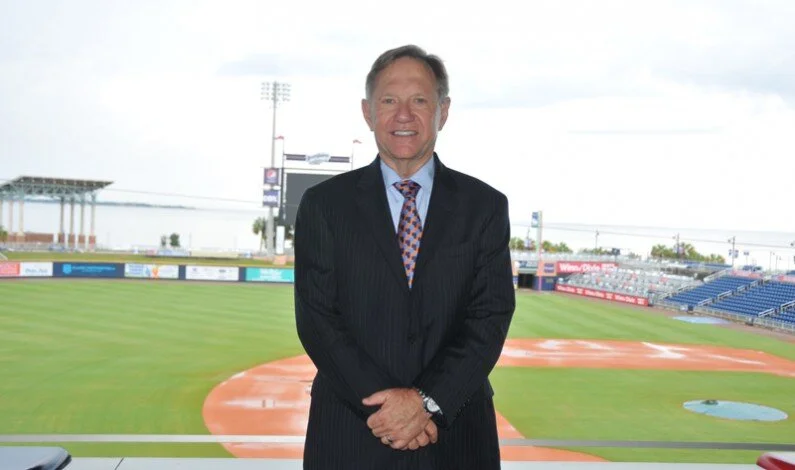Why Communities Struggle to Get Things Done: How to Keep the Throttle Down
Image via Unsplash.
When communities are not successful in implementing a project or plan, what is the reason? Is it a lack of fresh ideas? Is it that people don’t care? Is it that the plan’s not good? Or, is it because something in the implementation phase doesn’t go as planned?
More often than not, it’s an implementation issue. The challenge is not the plan, it’s the execution of the plan.
In our experience, planners work extremely hard. They use excellent resources. They use the most up-to-date research and data. They facilitate input and provide a solid plan. (At the last minute, some people may decide they don’t like the plan. We find it’s usually the ones who didn’t give input along the way.) However, we almost always find it’s not the plan that’s the issue, it’s the struggle to implement it in the community.
Implementation is a struggle everywhere. Businesses often struggle with executing their plans. However, a company usually has the advantage of a CEO who can set goals, allocate resources, and put forth a timeline to get it done. A CEO can remove people who are not supportive of the plan. And the CEO can align all the people behind it and put systems in place to ensure things get done. With a city, the challenge is that even if there’s strong leadership that sets the goal, it’s often hard to get the alignment needed to push the plan to finish. And people that do not support the plan cannot be let go.
So how do we implement successfully? One of the biggest barriers to implementation (in business, community, and nearly everywhere) is the lack of understanding of how to manage change.
I served on a curriculum committee at Harvard Business School, where it was discovered that a central skill a leader needs is the ability to manage change. When I work with communities, I start with this question, “How many of you have had training and work in change management?” What I’ve found is that while some have this kind of training, many have not. Even the ones who have been trained in change management have not had the training all together. This prevents them from getting the alignment they need.
So what’s the key to managing change in a way that allows initiatives to get implemented? Let me walk you through a few points based on what I’ve learned from others on successfully managing change.
Establish a Burning Platform
Image from Penscola’s winning campaign of the 2019 Strongest Town contest.
The first step to get as much of the community as possible behind the project is to establish a burning platform. This is a change management term that essentially means people have to feel a reason to be supportive. WHY should we make the change and HOW do we create a sense of urgency around it? Without a burning platform, it’s hard to get the urgency you need for people to act.
Sometimes it appears to be a no-brainer that there’s already a burning platform. But you can’t assume there is.
It’s easy to get confused about this at the outset of an initiative because the people you’re talking to then are the early zealots. Some 25 percent of the community might be there with you and gung-ho about the project. The challenge is we need more than 25 percent to implement an initiative. Critical mass is needed.
In Pensacola I got involved with a group of people to create a downtown park and we had the right project at the right time. We had a lot of supporters on the city council. We got an almost unanimous vote to move forward. Because we didn’t get a big enough critical mass, the people who were against the park started speaking out. What happened was that something that was approved in 2006, actually opened up in 2012, after six years of delays and referendums and lost opportunities.
Why It Took Us Time to Get the Burning Platforms Right With Stakeholders
The burning platform that gets a community to critical mass might be different for different stakeholders. In Pensacola we had several burning platforms. Number one was keeping the community’s young people at home. We saw that for us to keep talent home, we needed a vibrant downtown.
The second burning platform was environmental. At the time we had toxic soil downtown where we wanted to build the park. This property was partitioned off and people couldn’t even walk on it. It was not healthy for the community. There was also an issue with homeless people there who needed to be relocated somewhere safer.
A third burning platform was obviously financial. The surrounding land would generate some tax paying revenue. If we could get this land attractive, we could also develop more property taxes.
Most communities need a few different burning platforms to move them over the 50 percent support threshold and generate momentum. They also need to get clear on the key message points that will take them to critical mass. In Pensacola, I’d say most people who voted for the park did so because they wanted their kids to stay home or come back home. That’s a “heart & mind” message. People make decisions based more on emotion than on data. Another group voted for it because they saw this would improve the financial sustainability of the community. This is why civic education and messaging are so vital. When people understand the “why” behind an initiative they’re more likely to support it.
Don’t Waste Time Winning Over the Unwinnable
When we think about reaching critical mass for a project we must understand that there are four types of citizens. Type 1 are the zealots we’ve already talked about who make up about 25 percent of the population. They come to meetings, wear the buttons, and are visible and vocal supporters. The Type 2 people are not certain but lean toward yes. Type 3 are skeptical about the project but are not a hard no. Together, they might make up 50 percent of the population.
Type 4—the last 25 percent—are those people who are against everything. They are the naysayers and they’re the group that often trip communities up. The naysayers are pretty covert at first because they don’t think the project is going to happen. After all, too many other plans have not been implemented in the past. So you’re moving along relatively okay, then all of a sudden, this group comes out of the woodwork and starts throwing monkey wrenches into the plan.
What we learned in Pensacola is that we spent too much time trying to win over the unwinnable. Change management teaches us we’ve got to spend more time with the people who want to move (or could be convinced to move) versus wasting energy on those who aren’t going to move no matter what. It doesn’t mean we don’t give everyone the information. We just don’t exhaust ourselves trying to change the unchangeable.
What we learned is that you have to make the one option unattractive and the other option way more attractive: We can either keep toxic soil in our downtown or we can create a thriving place for everyone, generate tax dollars and jobs, and keep young people at home.
When Turbulence Hits, Keep the Throttle Down
Anyone who studies change management knows that turbulence is part of the process. That’s when things get difficult. It’s sort of like when you’re running a marathon and you hit the wall. If you don’t know a wall exists, you’re going to stop. No matter how much you’ve trained, if no one’s ever told you about the wall, when you hit the 19- or 20-mile mark, you’re going to stop.
Essentially, there are four predictable phases every organization goes through when they set out to implement change. (This includes communities.)
The Honeymoon Phase. At this phase there’s lots of excitement, energy, and optimism.
Reality Sets In. A bit of discomfort emerges as people realize that what they’ve undertaken is bigger than they thought.
The Uncomfortable Gap. Things start to get pretty rough. There may be a lot of conflict. Tough decisions must be made. Here in Phase 3 is where the real turbulence sets in and it’s tempting to just give up.
Consistency. This is where we start to see real results. People feel good about where things are. Jim Collins would call this the breakthrough.
Chuck Yeager with the Bell X-1. Image source.
When I talk about the change process, I like to bring up Chuck Yeager, the test pilot who broke the sound barrier. Right before he broke the sound barrier, the plane would start to shake. Other pilots who had attempted this would ease off at this point, but Chuck was able to keep the throttle down. And that’s always our goal with communities. We try to help them realize when turbulence hits during Phase 3 they need keep the throttle down. The challenge is that people don’t realize that turbulence is not always a bad thing. It means they’re getting closer to break into the solution.
Every time you bring back the throttle, the odds of success get less and less. People get tired, or something changes with the finances. We’ve seen project after project either not make it to the finish line or come to the finish line with less than what they wanted because they’ve slowed down so much or tried so hard to appease the unappeasable. Often they end up with a project that really doesn’t hit the desired outcomes. This is why workshops on how to manage change are critical. The whole community needs to understand change. Then when they are going through turbulence, they won’t panic. They’ll realize they have to keep the throttle down.
For example, I was working with a city that had a goal of retaining talent. They were losing too many city workers in certain areas, and one was the fire department. After a closer look, they saw it was a compensation issue. They had decided for the first time ever to create a fee for businesses to help cover the compensation increase needed to retain experienced personnel. Now, you can imagine some of the businesses didn’t like this and pushed back. When they hit turbulence the city council attended a workshop on change. One of the messages was “We’ve got to keep the throttle down.” This allowed them to be more equipped to deal with the naysayers and push this initiative through.
Most cities have great planning departments filled with talented people that work hard. If we don’t help those plans get implemented, eventually they become disillusioned. Some will even lose their passion. These people are too important to let down. All leaders and citizens need to work together to learn the basics of change management so they can keep good projects moving forward. Only when this happens can we keep moving toward vibrancy.







In this episode, Chuck explores the flawed nature of North America’s current “housing bargain,” where most neighborhoods are allowed to stay exactly the same as long as some neighborhoods are forced to radically change. (Transcript included.)